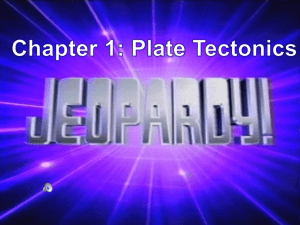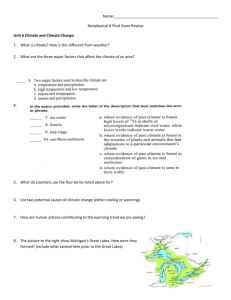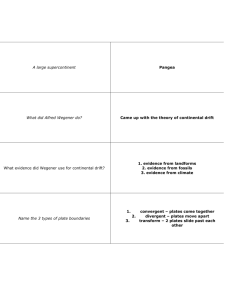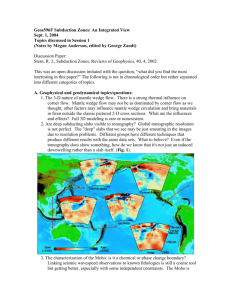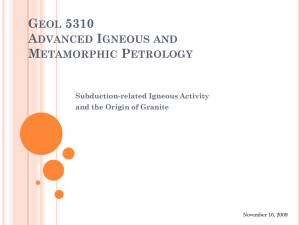Name
advertisement
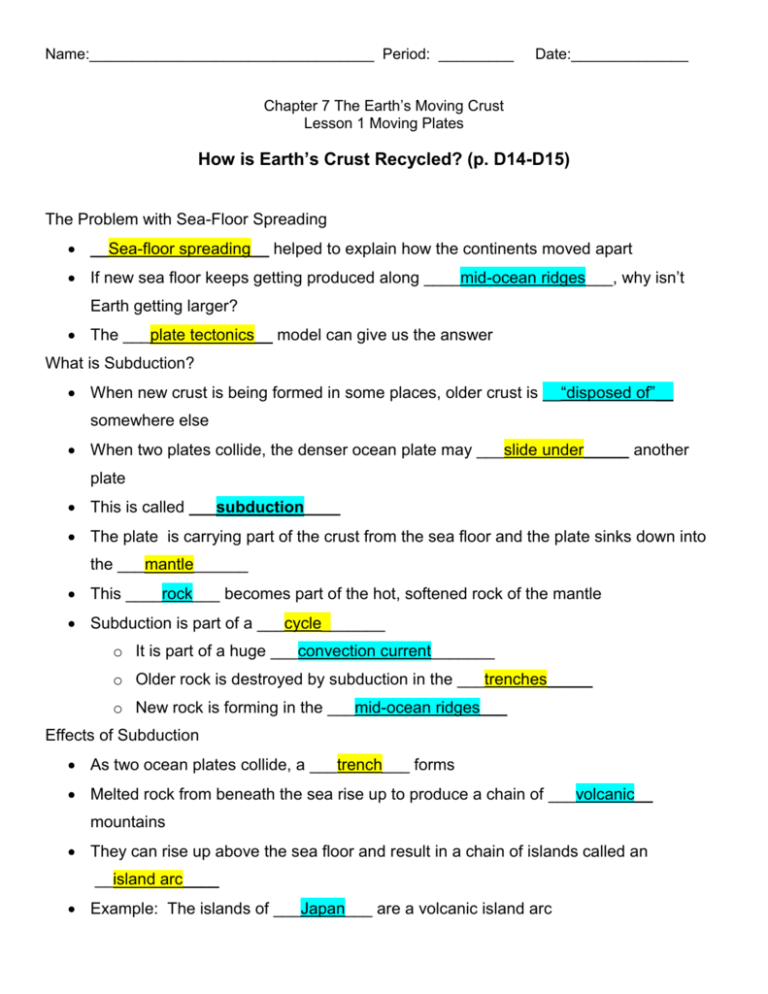
Name:__________________________________ Period: _________ Date:______________ Chapter 7 The Earth’s Moving Crust Lesson 1 Moving Plates How is Earth’s Crust Recycled? (p. D14-D15) The Problem with Sea-Floor Spreading __Sea-floor spreading__ helped to explain how the continents moved apart If new sea floor keeps getting produced along ____mid-ocean ridges___, why isn’t Earth getting larger? The ___plate tectonics__ model can give us the answer What is Subduction? When new crust is being formed in some places, older crust is __“disposed of”__ somewhere else When two plates collide, the denser ocean plate may ___slide under_____ another plate This is called ___subduction____ The plate is carrying part of the crust from the sea floor and the plate sinks down into the ___mantle______ This ____rock___ becomes part of the hot, softened rock of the mantle Subduction is part of a ___cycle_______ o It is part of a huge ___convection current_______ o Older rock is destroyed by subduction in the ___trenches_____ o New rock is forming in the ___mid-ocean ridges___ Effects of Subduction As two ocean plates collide, a ___trench___ forms Melted rock from beneath the sea rise up to produce a chain of ___volcanic__ mountains They can rise up above the sea floor and result in a chain of islands called an __island arc____ Example: The islands of ___Japan___ are a volcanic island arc Question: How is Earth’s crust recycled through the mantle? Answer: When two plates collide, the denser plate may slide underneath the other plate. This is called subduction. The plate that is carrying part of the crust from the sea floor melts and becomes part of the hot, softened rock of the mantle. Subduction is part of the cycle that recycles Earth’s crust in the mantle. Older rock is melted by subduction in the trenches and new rock is forming in the midocean ridges.

